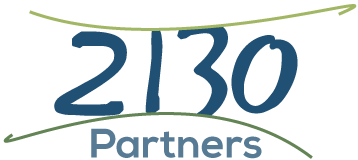 Well of course it IS about football - competition, pride, and all that goes with it. That's the simple explanation, but it’s also about a phenomenon – within the sport and the local community.
Well of course it IS about football - competition, pride, and all that goes with it. That's the simple explanation, but it’s also about a phenomenon – within the sport and the local community.
Let’s consider it from a leadership perspective. Ask yourself what it takes to:
- Assemble a group of very young 3rd to 7th round draft choices
- Add in players who weren't even drafted
- Take this group without any “stars,” and turn them into a team that can win any professional football game
- Then take them to the biggest football event there is and thrash the team with the best offense
That was the Seahawks team part of it, but the other huge piece of this is the community part of it, the fans known as, “the 12th man.” Ask yourself how in the world do you get support from the community that turns into an unprecedented phenomenon? Including getting a large corporation like Boeing to paint a new 747-8 with your logo and then fly it for 3-1/2 hours on its first serious test flight in a pattern that paints a giant 12 over the State of Washington? And 7,000 Microsoft employees to form a giant 12 on a local football field? And the Washington State Legislature to temporarily rename Mt. Rainier to Mt. Seattle Seahawks? Best of all, how do you get thousands of Washington residents to create every imaginable expression of support for the team and display it all everywhere?
The reality is - you can't figure out a plan to make this happen, any more than you and your leadership team can "drive creativity down through your organization" or mandate passion. The kind of creativity, organic leadership, and intense sense of community that the team members and all of us in the Northwest simply call "Seahawk Nation" can only be unleashed.
The fact that Pete Carroll and his colleagues selected good young men who are also good football players and partners with their teammates was the foundation. Critical to this is that Pete created an atmosphere, context, paradigm, whatever label you’d like to use, that called forth the best from everyone involved. The interesting thing about this is that when you create an empowering context, it is not limited to only a select few. It's catching. It causes outcomes that can’t be imagined let alone controlled.
Mix the creativity, passion, and leadership that a powerful context unleashes within a group of young players who spend time visiting hospitals and setting up foundations, (even though they may still be on the NFL's starting pay), and the community falls in love – with the team and with each other. Before it's over, strangers are treating each other like best friends. (The only other example I can think of that is similar is the behavior we experienced right after 9/11, when there was an outpouring of kindness and neighborliness, but this time, thankfully, we didn’t have a horrible event for motivation.)
The leadership methods the Seahawks used aren’t limited to sports. Think about your leadership. How can you and your team shift the way you work from top-down command-and-control to setting a powerful context inside of which innovation, creativity, and organic energy can percolate and unexpected results can spring forth.
Here are some tips from the Seahawks to get you started:
- Quarterback Russell Wilson asked himself, "why not me," when he thought about leading a team to the Super Bowl. He asked the team "why not us?" And that soon shifted from a question from a team leader, to a team mantra. What can your team mantra that expresses your vision be?
- Pete Carroll repeated over and over to the team, “you gotta be all in!” This proved to be so powerful that it became a chant and tagline for the 12th man fans – “I’m in!”
- Pete Carroll also emphasized, “the finish” meaning stay on purpose and don’t lose focus until it’s completely over. This is one of the reasons the Seahawks excelled at being a “second half team.” You won't see the team get upended late in a game...they stay on it until it's done!
The suggestion here is not to simply imitate the Seahawks. The suggestion is to really think about the principles of this style of leadership and take some time to discern how you can apply them to lead your organization to new and unexpected levels of success and community.
photo credit: architecturegeek via photopin cc

 Avoiding life’s essentially chaotic and messy nature seems to be a preoccupation of many leaders. The question is - why? Underneath it all the truth about this is something that none of us really wants to face or admit. The reality is if you are willing to be present to the messiness and take appropriate action based on the conditions in which you actually find yourself, you will be uncomfortable quite often and also probably experience feeling vulnerable.
I was recently reminded of this subject while watching a TED video by Glennon Doyle Melton entitled “
Avoiding life’s essentially chaotic and messy nature seems to be a preoccupation of many leaders. The question is - why? Underneath it all the truth about this is something that none of us really wants to face or admit. The reality is if you are willing to be present to the messiness and take appropriate action based on the conditions in which you actually find yourself, you will be uncomfortable quite often and also probably experience feeling vulnerable.
I was recently reminded of this subject while watching a TED video by Glennon Doyle Melton entitled “ How does a leader look out for the well-being of each individual in an organization and yet assure the success of the whole venture? It is often seemingly a nearly impossible challenge.
"What's good for the goose is good for the gander" is a very old English saying that basically says that what is good or fair for one person is good or fair for the other. While this may be excellent wisdom regarding individuals, it doesn't always work well when viewing the individual versus the whole gaggle of geese. An extreme example is when a predator grabs one goose, the rest of the flock is able to escape to safety. Although it didn't go well for the individual goose the flock was safe.
How does a leader look out for the well-being of each individual in an organization and yet assure the success of the whole venture? It is often seemingly a nearly impossible challenge.
"What's good for the goose is good for the gander" is a very old English saying that basically says that what is good or fair for one person is good or fair for the other. While this may be excellent wisdom regarding individuals, it doesn't always work well when viewing the individual versus the whole gaggle of geese. An extreme example is when a predator grabs one goose, the rest of the flock is able to escape to safety. Although it didn't go well for the individual goose the flock was safe. Building on my recent blog about
Building on my recent blog about  In an article about how to rethink global strategy
In an article about how to rethink global strategy “Leaders have to recognize what everyone is saying and also be the catalyst that will call out not what makes people happy but what needs to be done to move forward." - Dr. Speciosa Wandira-Kazibwe, Former Vice President of Uganda
I
“Leaders have to recognize what everyone is saying and also be the catalyst that will call out not what makes people happy but what needs to be done to move forward." - Dr. Speciosa Wandira-Kazibwe, Former Vice President of Uganda
I  The longer I work with leaders the more I see how often they damage or destroy great opportunities by failing to deal with their own “inner demons” or limiting beliefs. I witness damage not just to their companies, but to their personal lives. One of my CEO clients is now entering the divorce process after only recently telling me what a great relationship he had. Turns out his wife feels like she can’t trust him in ways that are important to her and he didn’t even see it.
In this complex day and age self-awareness is a requirement of leaders and leadership. In order to be really effective at the level now required, you need to have an objective understanding of what you are good at, what you are not good at, how well you do or don’t connect with people, what kind of impact or “wake” you leave behind when you exit a meeting, how you handle conflict and stress, how you manage your personal reactivity and more. This level of self-understanding enables you to successfully make better choices for yourself, your team and your organization. Even Richard Branson is acknowledging the importance of self-awareness for leaders in a
The longer I work with leaders the more I see how often they damage or destroy great opportunities by failing to deal with their own “inner demons” or limiting beliefs. I witness damage not just to their companies, but to their personal lives. One of my CEO clients is now entering the divorce process after only recently telling me what a great relationship he had. Turns out his wife feels like she can’t trust him in ways that are important to her and he didn’t even see it.
In this complex day and age self-awareness is a requirement of leaders and leadership. In order to be really effective at the level now required, you need to have an objective understanding of what you are good at, what you are not good at, how well you do or don’t connect with people, what kind of impact or “wake” you leave behind when you exit a meeting, how you handle conflict and stress, how you manage your personal reactivity and more. This level of self-understanding enables you to successfully make better choices for yourself, your team and your organization. Even Richard Branson is acknowledging the importance of self-awareness for leaders in a  At a breakfast meeting during the recent
At a breakfast meeting during the recent  At a recent
At a recent  One of the essential steps to increased leadership effectiveness and more productive interactions is “acceptance” (both of ourselves and others). While it’s easy to say, our work with clients and
One of the essential steps to increased leadership effectiveness and more productive interactions is “acceptance” (both of ourselves and others). While it’s easy to say, our work with clients and  In a recent
In a recent  When members of our society organize to accomplish goals, they typically choose between two major domains – the “For-Profit” and the “Not-for-Profit” worlds. We tend to believe each of these worlds is very different and “ne’er the twain shall meet.”
Is this division useful and valuable or limiting and restrictive for a vast number of participants? Is it real or is it largely just perception? The for-profit world is supposedly where the tough and the self-serving duke it out for money. The non-profit world is supposedly where people who care go to make a difference in the world and be of selfless service. Furthering the depth of the chasm between the two, there is generally little cross-over or sharing of ideas. Yes, the tax laws and the accounting world have drawn a completely separate set of rules for each, but the divide extends much further to commonly include separate recruiting and training channels,
When members of our society organize to accomplish goals, they typically choose between two major domains – the “For-Profit” and the “Not-for-Profit” worlds. We tend to believe each of these worlds is very different and “ne’er the twain shall meet.”
Is this division useful and valuable or limiting and restrictive for a vast number of participants? Is it real or is it largely just perception? The for-profit world is supposedly where the tough and the self-serving duke it out for money. The non-profit world is supposedly where people who care go to make a difference in the world and be of selfless service. Furthering the depth of the chasm between the two, there is generally little cross-over or sharing of ideas. Yes, the tax laws and the accounting world have drawn a completely separate set of rules for each, but the divide extends much further to commonly include separate recruiting and training channels,  There is an expression I hear regularly around the table of the executive meetings I lead. It is “I have to___” (fill in the blank). To me, this comment comes from the “survival brain.” It is born in burden and sacrifice and it is a close cousin to “I should,” “I ought to,” “I gotta” etc. In addition, these openers carry an “unsaid” piece that follows on – something like “…but I can’t” or …”we don’t have the money and/or time”…”they won’t let me, etc.” When I hear the, “I have to…” it usually comes from a place of feeling victimized or overwhelmed and I know nothing fruitful will come of it.
This conversational pattern passes for normal and quite often will get you off the hook of further questioning from peers. It lets your own mind off the hook for performance. It also masks the real consequences of failure to act, failure to produce the results in question, or failure to have that important, scary conversation that’s being avoided. Needless to say, there will be consequences!
There is an expression I hear regularly around the table of the executive meetings I lead. It is “I have to___” (fill in the blank). To me, this comment comes from the “survival brain.” It is born in burden and sacrifice and it is a close cousin to “I should,” “I ought to,” “I gotta” etc. In addition, these openers carry an “unsaid” piece that follows on – something like “…but I can’t” or …”we don’t have the money and/or time”…”they won’t let me, etc.” When I hear the, “I have to…” it usually comes from a place of feeling victimized or overwhelmed and I know nothing fruitful will come of it.
This conversational pattern passes for normal and quite often will get you off the hook of further questioning from peers. It lets your own mind off the hook for performance. It also masks the real consequences of failure to act, failure to produce the results in question, or failure to have that important, scary conversation that’s being avoided. Needless to say, there will be consequences! A colleague of mine recently joined the Board of Directors of a favorite non-profit with much enthusiasm, only to discover how much drama was going on behind the scenes among the Board members. She has found herself in the middle of one of the top issues that diminish team effectiveness – “the undiscussables.” The stories she has shared with me are very similar to those I have heard over and over in my practice from CEO clients about issues within their teams.
A lot of money and time gets spent creating what appears to be shared vision, mission, values, and alignment. But what happens when all that work isn’t enough? What happens when the team remains dysfunctional even though they appear to share the stated vision, values, and desired outcomes? What lies beneath are the “real issues” or “undiscussables” that were not addressed in the planning sessions or consultants’ work.
A colleague of mine recently joined the Board of Directors of a favorite non-profit with much enthusiasm, only to discover how much drama was going on behind the scenes among the Board members. She has found herself in the middle of one of the top issues that diminish team effectiveness – “the undiscussables.” The stories she has shared with me are very similar to those I have heard over and over in my practice from CEO clients about issues within their teams.
A lot of money and time gets spent creating what appears to be shared vision, mission, values, and alignment. But what happens when all that work isn’t enough? What happens when the team remains dysfunctional even though they appear to share the stated vision, values, and desired outcomes? What lies beneath are the “real issues” or “undiscussables” that were not addressed in the planning sessions or consultants’ work. Are you missing out on a powerful source of creativity by overlooking the introverts in your organization and the way they work best?
Susan Cain has a wonderful
Are you missing out on a powerful source of creativity by overlooking the introverts in your organization and the way they work best?
Susan Cain has a wonderful  In a USA Today article entitled, “
In a USA Today article entitled, “ The Pacific Northwest Vistage Chairs have been using a powerful system called “The Enneagram” for their own development and for some of their groups. For those who have not heard of it, The Enneagram has been around since at least the 4th century. It is a system that identifies nine core life strategies, made up of habits of emotion and thought, that each of us uses to navigate life. The Enneagram is quite different from personality tests or even typical diagnostics. It’s a very rich system that gives people access to much deeper self-awareness and the possibility of positive change. Some of the most valuable things I’ve noticed about using The Enneagram are:
The system identifies 9 different enneatypes, or 9 different points-of-view, and that helps create compassion both for self and others. Once you realize that people just have different focuses of attention, that they are reacting from deeply engrained habits, and that you are doing the same thing, other people’s behavior doesn’t seem so unexplainable.
The Pacific Northwest Vistage Chairs have been using a powerful system called “The Enneagram” for their own development and for some of their groups. For those who have not heard of it, The Enneagram has been around since at least the 4th century. It is a system that identifies nine core life strategies, made up of habits of emotion and thought, that each of us uses to navigate life. The Enneagram is quite different from personality tests or even typical diagnostics. It’s a very rich system that gives people access to much deeper self-awareness and the possibility of positive change. Some of the most valuable things I’ve noticed about using The Enneagram are:
The system identifies 9 different enneatypes, or 9 different points-of-view, and that helps create compassion both for self and others. Once you realize that people just have different focuses of attention, that they are reacting from deeply engrained habits, and that you are doing the same thing, other people’s behavior doesn’t seem so unexplainable. Recently I was returning from vacation and while sitting on our flight home, the line "...hints at his bad-but-not-too-bad-boy persona" grabbed my attention. It was in an
Recently I was returning from vacation and while sitting on our flight home, the line "...hints at his bad-but-not-too-bad-boy persona" grabbed my attention. It was in an